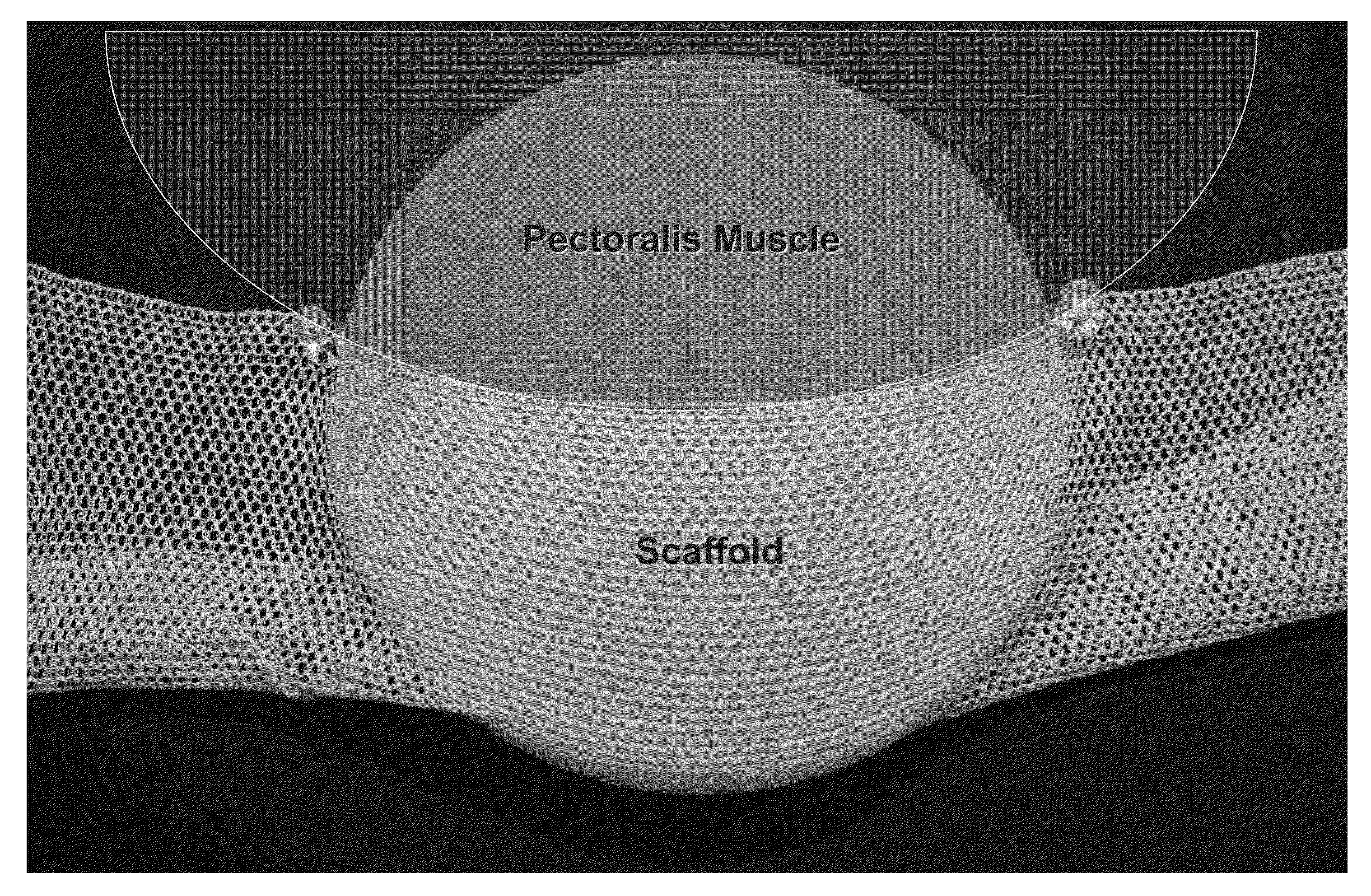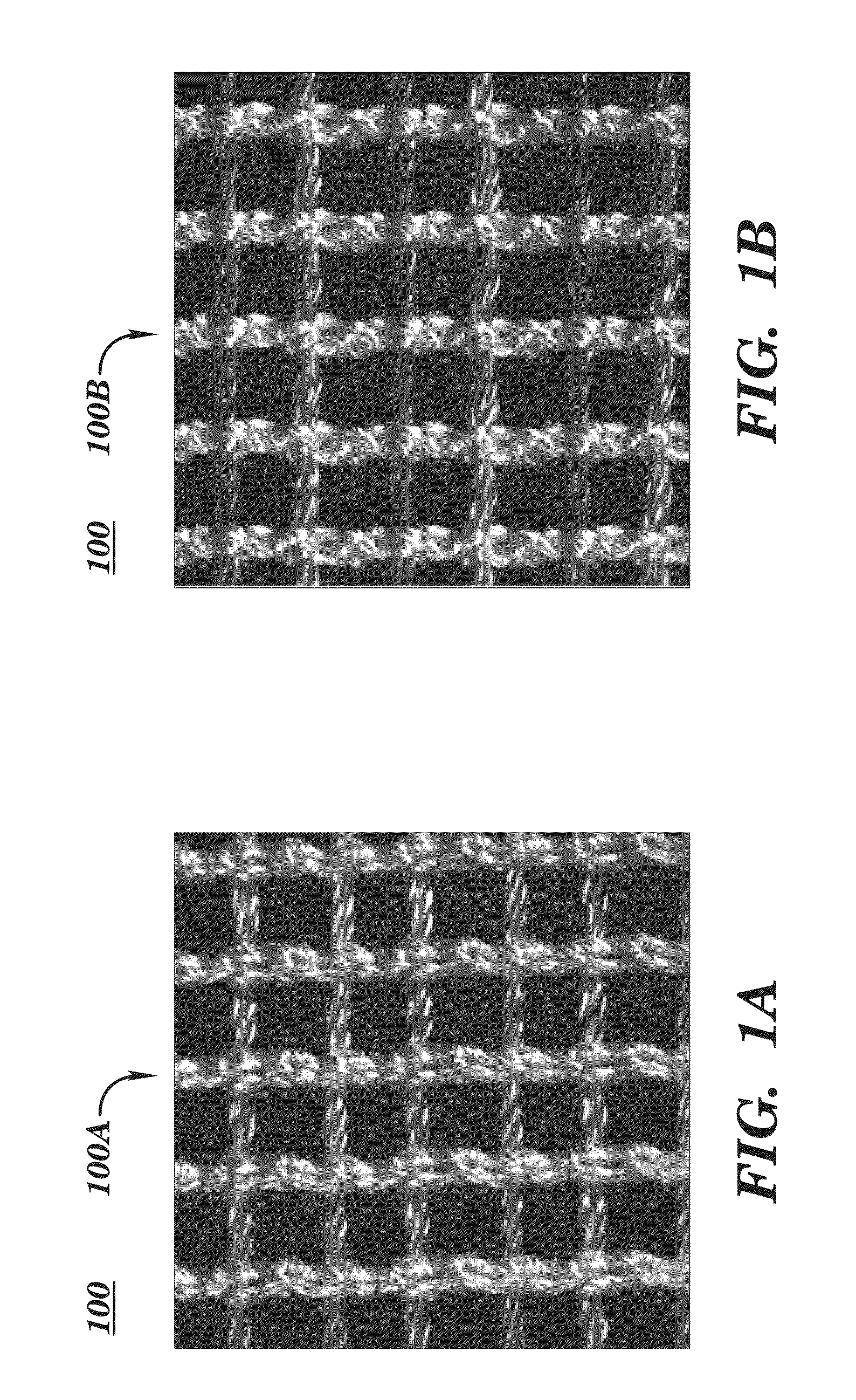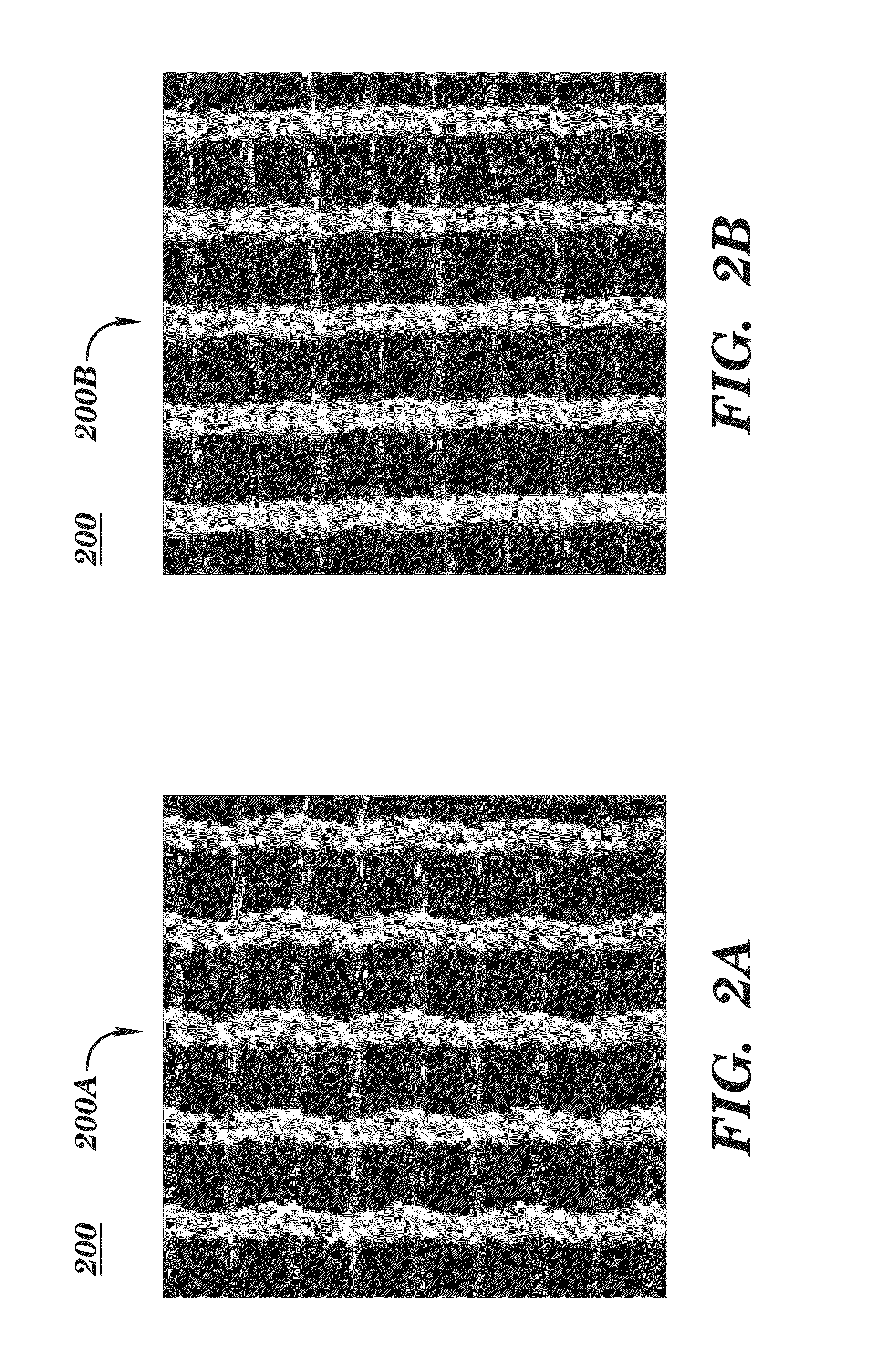Prosthetic device and method of using in breast augmentation and/or breast reconstruction
a breast augmentation and prosthetic device technology, applied in the field of surgical silk mesh or scaffold device, can solve the problems of scar encapsulation and tissue erosion, pain, and a variety of complications, and achieve the effect of increasing tension
- Summary
- Abstract
- Description
- Claims
- Application Information
AI Technical Summary
Benefits of technology
Problems solved by technology
Method used
Image
Examples
examples
[0225]In a breast reconstruction procedure, a knitted silk scaffold having a node-lock design is used. The scaffold is draped and made into a sling or pocket for insertion of a breast implant. Observations of the surgeon can include that the scaffold used is easier to use than existing FLEX HD product. It is possible to see through the scaffold which is desirable. It is noted that the scaffold drapes well when in place and can be implanted as a desirable and useful breast support sling.
EXAMPLE
Two-Stage Breast Reconstruction
[0226]SeriScaffold™ surgical scaffold (warp knitted, multi-filament, bioengineered, silk mesh or fabric with a “node lock” knit pattern or structure) is obtained from Allergan Medical (Santa Barbara, Calif. and Medford, Mass.). SeriScaffold™ surgical scaffold is used as a transitory scaffold for soft tissue support and repair in two-stage breast reconstruction to reinforce deficiencies where weakness or voids existed that required the addition of material to obtai...
example
Single Stage Breast Reconstruction
[0232]SeriScaffold™ silk scaffold is obtained from Allergan Medical for use in breast reconstruction for tissue support and repair in direct-to-implant breast reconstruction surgery. In this Example SeriScaffold™ is used as surgical scaffold in direct-to-implant (DTI), or single-stage, breast reconstruction for soft tissue support and repair. The SeriScaffold™ surgical scaffold is used as a transitory scaffold for soft tissue support and repair to reinforce deficiencies where weakness or voids exist that required the addition of material to obtain the desired surgical outcome.
[0233]SeriScaffold™ surgical scaffold is supplied sterile in a single-use 10 cm×25 cm size, with one device utilized per breast. The device is implanted in the subject immediately post mastectomy, during the breast implant placement surgery, in a direct-to-implant breast reconstruction procedure. In this Example SeriScaffold™ surgical scaffold in DTI breast reconstruction is us...
PUM
 Login to View More
Login to View More Abstract
Description
Claims
Application Information
 Login to View More
Login to View More - R&D
- Intellectual Property
- Life Sciences
- Materials
- Tech Scout
- Unparalleled Data Quality
- Higher Quality Content
- 60% Fewer Hallucinations
Browse by: Latest US Patents, China's latest patents, Technical Efficacy Thesaurus, Application Domain, Technology Topic, Popular Technical Reports.
© 2025 PatSnap. All rights reserved.Legal|Privacy policy|Modern Slavery Act Transparency Statement|Sitemap|About US| Contact US: help@patsnap.com



